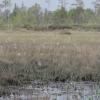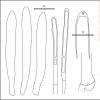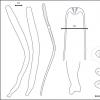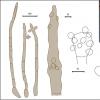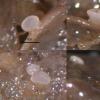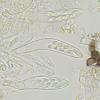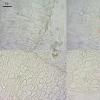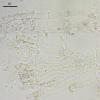
15-12-2025 15:48
 Danny Newman
Danny Newman
Melanospora cf. lagenaria on old, rotting, fallen

15-12-2025 15:54
 Johan Boonefaes
Johan Boonefaes
Unknown anamorph found on the ground in coastal sa

15-12-2025 21:11
 Hardware Tony
Hardware Tony
Small clavate hairs, negative croziers and IKI bb

15-12-2025 07:09
 Danny Newman
Danny Newman
indet. Rutstroemiaceae sp. on unk. fallen leavesMc

15-12-2025 07:05
 Danny Newman
Danny Newman
Pseudosclerococcum golindoi (det: Zotto)near Cosb

15-12-2025 11:49
 Danny Newman
Danny Newman
ITS sequences from the following two collections B

15-12-2025 12:34
 Danny Newman
Danny Newman
indet. Rhytismataceae on oak leafnear Purchase Roa

09-12-2025 12:06
 Andgelo Mombert
Andgelo Mombert
Bonjour,Je recherche l'article concernant Hypobryo
Marsh clover fungi
Nina Filippova,
05-07-2013 07:17
The litter of Marsh clover (Menyanthes trifoliata) is scarce, thick leaves and leafstalks lying mostly submerged in water, loose, slimy and quite decayed. I had not expected to find anything there, but they were, four good species inhabiting this substrate. All are new in the list (since i had not inspected this plant before at all). All three teleomorphic species are discomycetes and one anamorphic is related, i belive, to one of them.
White translucent discs from Helotiaceae could be something interesting. The apothecia combine in itself several interesting features: edge cells of excipulum are glued and covered at upper part by warts; tips of paraphyses are fusoid and also with incrustations, which bring to the hymenium surface its powdery look; asci with obscure clamp and small euamyloid pore. (#4198 - https://www.cubby.com/pl/%234198/_a2e42a1bcb3f4512b7344ce157e0efb8)
Another one is cryptic Mollisia (as all Mollisia's for me, and i am joking). The aposes are small, flat, thin, gray. The paraphyses with oily guttules, not changing to green with KOH treatment, and the spores are short, fusoid and slightly heteropolar. (#4197 - https://www.cubby.com/pl/%234197/_53cde3f264db4d29b4d01a693856c7f9)
Small beautiful species from Rutstroemiaceae or Sclerotiniaceae is another interesting finding. It forms circular sclerified areas around orangish short-stipitate cups. Spores with inpersistent gelatinous sheath. I think that the anamorphic stage from leaf-stalks collected nearby is the same species. (#4199 - https://www.cubby.com/pl/%234199/_a2ebfb2551fc48378db954f90f71e380)
The anamorph is Botrytis - like, with thick branched conidiophores arising at black sclerotium and ellipsoid conidia forming densely at enlarged ends of branches. (#4200 - https://www.cubby.com/pl/%234200/_563f71419fcb408f97dca0bf80ec3e0b)?
Nina Filippova,
06-07-2013 07:25
Re : Marsh clover fungi
The Helotiaceous species (#4198) draws my attention, since there are several remarkable features but i am doubtfull even with genus id,
so i am adding more detailed information about it:
Apothecia cupulate, from sessile to with distinct stem, 320–760 in diameter, 200–900 mk high; hymenium flat, white, powdery, outer surface whitish, translucent, smooth.
Excipulum from large prismatic or more ellipsoid thick-walled hyaline walls, cells in end row (edge) with obtuse top part, and with warty incrustation, 16–30 x 7–10; asci clavate, with not clear clamp, with euamyloid ring (some purple tinge is present), 52–87 x 9.2–12.7; paraphyses cylindrical, with lanceolate upper part, segmented at base, filled with vacules, tips covered by incrustation (powdered surface of hymenium), about 85 long, 2 at base to 6 at tip; spores oval, with scarce oil content, 13.6 (12–17.4) x 4 (3.3–4.2) (n=11).
Nina.
so i am adding more detailed information about it:
Apothecia cupulate, from sessile to with distinct stem, 320–760 in diameter, 200–900 mk high; hymenium flat, white, powdery, outer surface whitish, translucent, smooth.
Excipulum from large prismatic or more ellipsoid thick-walled hyaline walls, cells in end row (edge) with obtuse top part, and with warty incrustation, 16–30 x 7–10; asci clavate, with not clear clamp, with euamyloid ring (some purple tinge is present), 52–87 x 9.2–12.7; paraphyses cylindrical, with lanceolate upper part, segmented at base, filled with vacules, tips covered by incrustation (powdered surface of hymenium), about 85 long, 2 at base to 6 at tip; spores oval, with scarce oil content, 13.6 (12–17.4) x 4 (3.3–4.2) (n=11).
Nina.

